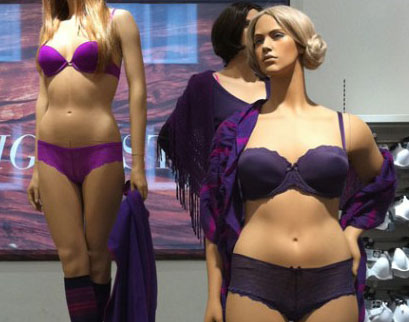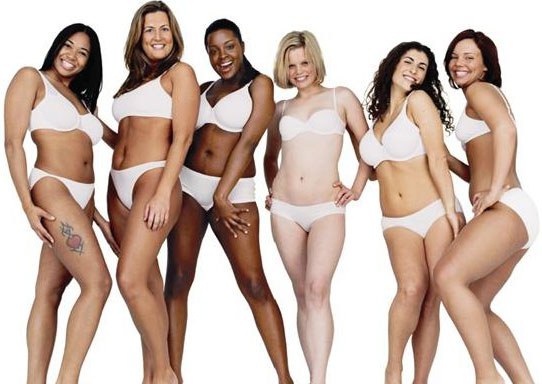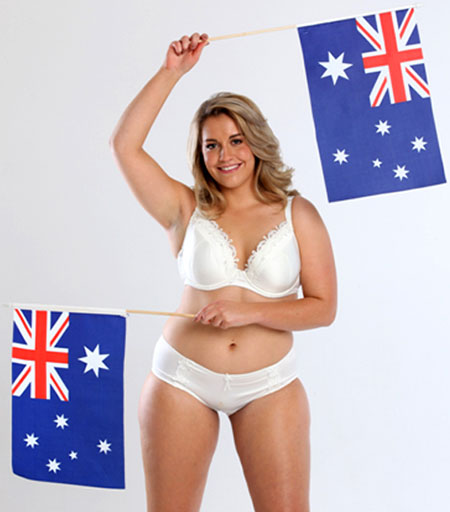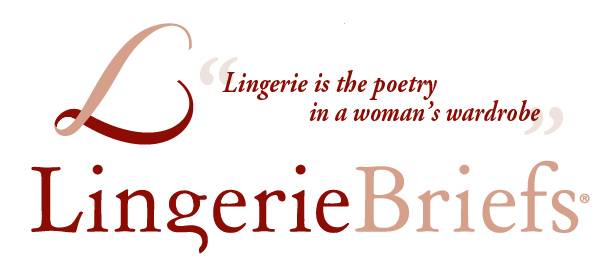Can Lingerie Mannequins Reflect Real Women?
By Elisabeth Dale
Lingerie mannequin photo goes viral, but does it make a difference?

Guess even a photo of two lingerie clad mannequins will go viral on the Internet. This one featured two mannequins on display in an H&M Store. The picture turned out to be two years old and wasn’t snapped at an H&M. Instead it was shot in a Swedish department store. These plastic female replicas were a bit different than usual. News reports of the viral image used adjectives such as “curvy,” “realistic,” “full-figured,” “plus-size,” and “real women.” Reviewers agreed that the public response to the photo was positive. Readers’ comments seemed to approve of increasing diversity when it comes to representing women’s body types.
Most negative objections to this body-image news story were directed at the use of terms like “full-figured” or “real.” It does seem odd that reporters refer to anything larger than a size small model as plus-sized. After all, the average female in the United States wears a size 14 and weighs 160 pounds. (Not exactly Victoria’s Secret model dimensions.) On the other hand, all women are “real” regardless of dress or bra size. Given the positive public response to the photo, should lingerie manufacturers change the shapes of the models and mannequins used in advertisements?

The body image debate is straightforward: more diversity will lessen negative self-esteem in young girls and women and could lower incidence of anorexia and other body-image disorders. This is based on research showing that female self-esteem plummets when young girls and women are exposed to unrealistic (the “real” word again) body shapes. But another study found that ‘real beauty’ ad campaigns don’t work because women feel worse about their bodies after viewing images of models their own size. No one seems to have a definitive answer on how best to combat negative self-esteem in young girls and women.

It may have more to do with the product and the stories attached to specific lingerie models. Many full cup bra brands embrace their target market’s dimensions. Curvy Kate’s Star-in-a-Bra campaign started in Europe and has now been launched in the US. This promotion encourages everyday women to send in their photos as part of a search for a new “Star In a Bra.” Curvy Kate’s D through K cup models don’t fit the stereotype of plus size or full figured but do appear real, youthful, and curvy. Their brand has found success by highlighting a different set of measurements.
What do you think? Would more varied shapes of mannequins alter a woman’s self-esteem? Should they?


Hi Helen. I couldn’t agree with you more. Part of the “sexy” bra advertising falsely leads women to believe that they must have their breasts spilling out the top — which is the opposite of fit. Besides, shouldn’t women wear beautiful feminine lingerie for themselves? All women are real women, and all deserve to be able to find well fitting and beautiful bras!
Hello Elizabeth,
Thank you for showing these mannequin’s and the curvier model also it just shows a real woman for one as its not someone showing too much breast for a bra which is not the proper way to wear a bra anyway which is another advertisement things that’s gets my dander up no wonder women haven’t a clue how to size or wear a bra.
You have changed my mind on the curvier mannequins they look good now all we need to do is get good looking clothes on them why do the American’s have a better idea of clothes for curvier women than the British do.
That goes for Lingerie also why do we think curvacious women have no breasts or think because you are curvacious that’s the only reason you have breasts also . women don’t know about their bodies .
Thanks, Marina. I agree! Apparently there are other intimate apparel lines that have used these “different” sized mannequins or models in advertising. Would be great to hear about their experience.
Elisabeth, thank you for highlighting this important topic. The issue is far too complex for simple answers and is worthy of a greater discussion.